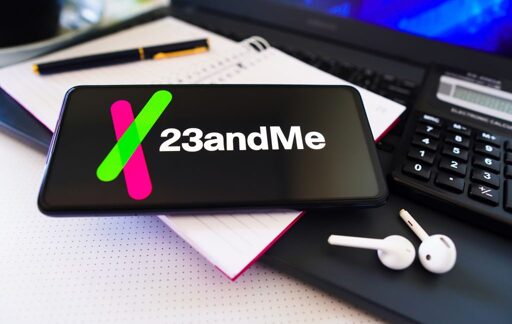Geologists doubt Earth has the amount of copper needed to develop the entire world
-
That alternative material is aluminum. It's like a top four abundance material in the crust. It's just super fucking hard to refine from minerals that don't like to give it up without oodles of energy. Like, turn minerals into plasma levels of energy. So the irony is, to grow our energy economy past the need for copper, we will first need to grow our energy economy.
Should fusion ever actually meet its promise, then this is one of the likely things we could do with this level of energy.
If we ever become a spacefaring civilization, it'll almost certainly be necessary during the colonization of other planets/moons/asteroids, since the geological processes that concentrate copper on the earth are not present in those places. Whereas aluminum is plentiful any place rocky.
So the irony is
I see what you did there...
-
Sounds like doomish stuff. We innovate all the time. If copper and lithium are short supply items then technology will morph to use something else.
Eh. Or we could just keep some areas impoverished and underdeveloped and profit off their cheap labor...
!remindme 15 years
-
I'm not defending the article, but I think most overhead power lines are aluminium, which is probably good as it's abundant compared to copper.
The problem with aluminum is that it gets REALLY hot when current is run through it. It used to be ised to wire homes, but is now banned because it wasn't safe.
-
The problem with aluminum is that it gets REALLY hot when current is run through it. It used to be ised to wire homes, but is now banned because it wasn't safe.
That's incorrect. Aluminium is about 30% worse by volume than copper, meaning you need to go up a size. What stopped it being used for houses was that the terminations weren't good enough, because aluminium has different thermal expansion and corrosion properties, plus they were using much worse alloys. That's now mostly fixed and if you're in the US, there's a very good chance that your service main is aluminium, and there's talk of allowing copper-clad aluminium (CCA) for subcircuit wiring.
Per mass, aluminium is a better conductor, which is why it's almost exclusively used overhead and in pretty significant volumes underground. The power grids were built on ACSR.
-
What is this publication and who finances it because this section is incredibly sus:
Copper use is not carved in stone. Hybrid cars, which pair small batteries with gasoline engines, need far less of the metal than fully electric vehicles.
Power grids that mix nuclear, wind, solar, and a pinch of natural-gas backup can slice the copper bill dramatically compared with battery-heavy systems.
“First of all, users can fact-check the study, but also they can change the study parameters and evaluate how much copper is required if we have an electric grid that is 20% nuclear, 40% methane, 20% wind, and 20% hydroelectric, for example,” Simon said. “They can make those changes and see what the copper demand will be.”
Like you think we can transition to an increasingly electrified world, where all power comes from electric utility lines, and you think our copper usage will be ... just in renewable power plants?
This reads like straight fossil fuel propaganda. In an electrified future the majority of copper use comes from distribution lines and products that use electricity not the type of power plants generating electricity.
The original study abstract is a little more clear. The main concern is grid storage batteries and EV batteries.
Given that the sharp increase in copper demand is primarily driven by batteries, the extra copper needs for electrification can be significantly reduced if the need for electrical storage is minimized. This can be achieved by generating electricity through a mix of nuclear, wind, and photovoltaics; managing power generation with backup electric plants fueled by methane from abundant resources of natural gas; and transitioning to a predominantly hybrid transportation fleet rather than fully electric vehicles.
-
Eh. Or we could just keep some areas impoverished and underdeveloped and profit off their cheap labor...
!remindme 15 years
hey it has been 15 years
-
What is this publication and who finances it because this section is incredibly sus:
Copper use is not carved in stone. Hybrid cars, which pair small batteries with gasoline engines, need far less of the metal than fully electric vehicles.
Power grids that mix nuclear, wind, solar, and a pinch of natural-gas backup can slice the copper bill dramatically compared with battery-heavy systems.
“First of all, users can fact-check the study, but also they can change the study parameters and evaluate how much copper is required if we have an electric grid that is 20% nuclear, 40% methane, 20% wind, and 20% hydroelectric, for example,” Simon said. “They can make those changes and see what the copper demand will be.”
Like you think we can transition to an increasingly electrified world, where all power comes from electric utility lines, and you think our copper usage will be ... just in renewable power plants?
This reads like straight fossil fuel propaganda. In an electrified future the majority of copper use comes from distribution lines and products that use electricity not the type of power plants generating electricity.
You're wrong in terms of long distance power lines being mostly copper, but this does seem a lot like fossil fuel propaganda.
Motors, generators, and transformers can be built using aluminium; they're just a bit bulkier and less efficient. Very common practice.
It looks like CCA might be making its way back into house wiring in the near future, with much lower risks than the 70s aluminium scare.
The big thing is that batteries really should be a last resort, behind demand response (using power when it is available, rather than storing it for later), long distance transmission, and public transport instead of private vehicles.
-
That alternative material is aluminum. It's like a top four abundance material in the crust. It's just super fucking hard to refine from minerals that don't like to give it up without oodles of energy. Like, turn minerals into plasma levels of energy. So the irony is, to grow our energy economy past the need for copper, we will first need to grow our energy economy.
Should fusion ever actually meet its promise, then this is one of the likely things we could do with this level of energy.
If we ever become a spacefaring civilization, it'll almost certainly be necessary during the colonization of other planets/moons/asteroids, since the geological processes that concentrate copper on the earth are not present in those places. Whereas aluminum is plentiful any place rocky.
Aluminum expands under electrical loads and the wires become loose. Loose wires are a fire hazard.
The real solution is steel wire with a copper coating. Electricity flows on the outer region of wires anyhow.
-
You're wrong in terms of long distance power lines being mostly copper, but this does seem a lot like fossil fuel propaganda.
Motors, generators, and transformers can be built using aluminium; they're just a bit bulkier and less efficient. Very common practice.
It looks like CCA might be making its way back into house wiring in the near future, with much lower risks than the 70s aluminium scare.
The big thing is that batteries really should be a last resort, behind demand response (using power when it is available, rather than storing it for later), long distance transmission, and public transport instead of private vehicles.
Heh. My batteries are flooded lead-acid, all 1320ah of 'em. No copper guilt here.
-
Perhaps it’s time to start researching alternative materials.
Perhaps it’s time to start researching alternative materials.
Plenty of metals floating around in space. Just need to go and get them.
Only need to capture one decent sized metalliferous asteroid from a near earth orbit and we'd be set for a century or two.
-
This all suggests that we keep producing, wasting and manufacturing things infinitely without ever recycling, reusing or re purposing everything that we are mining out of the ground. The article notes that this includes recycling but only at the rate we have now.
If we keep running our world the way we are now for the next hundred yes .... than yes, we are going to run out of everything because we live in an absolutely wasteful society that only runs in a way to produce things designed with planned obsolescence to break down in a short amount of time so that we can produce more junk to sell and drive a stupid economy to make a small group of idiots even more wealthy. The whole system is designed to run on making infinite money by producing infinite junk that doesn't last long.
Yes at the rate we are going and the way we are producing things and the way we shape our economy and the way we base our manufacturing .... we are definitely going to run out of everything.
We can change our economy and the way we produce and manufacture things - and get rid of this stupid structure of society of just endlessly making money for a small group of morons .... or we can keep doing things the way we are now until we run off a cliff and destroy everything and drive our species into extinction.
The article notes that this includes recycling but only at the rate we have now.
The original study says they assumed an annual increase of 0.53% as observed over the last 20 years.
-
I remember when phone lines were made of copper. We were sure that it would be impossible for everyone to have a phone.
There's a lot of copper pairs left underground. Many hundreds of thousands of kilometres of it. Use it as a pull-through for fibre-optic bundles, and everyone can have gigabit internet.
Seriously though, there'll come a time when that underground obsolete copper will become economic to retrieve.
-
There's a lot of copper pairs left underground. Many hundreds of thousands of kilometres of it. Use it as a pull-through for fibre-optic bundles, and everyone can have gigabit internet.
Seriously though, there'll come a time when that underground obsolete copper will become economic to retrieve.
All kinds of copper are economic to retrieve with enough crack
-
Eh. Or we could just keep some areas impoverished and underdeveloped and profit off their cheap labor...
!remindme 15 years
This was my first thought, we aren't going to develop the whole world. That's not how this works. Who said that was a goal of... well ... anyone's?
That's a rhetorical question. Frfr tho, does that remind me work on your instance only, or what's the deal with that?
-
You're wrong in terms of long distance power lines being mostly copper, but this does seem a lot like fossil fuel propaganda.
Motors, generators, and transformers can be built using aluminium; they're just a bit bulkier and less efficient. Very common practice.
It looks like CCA might be making its way back into house wiring in the near future, with much lower risks than the 70s aluminium scare.
The big thing is that batteries really should be a last resort, behind demand response (using power when it is available, rather than storing it for later), long distance transmission, and public transport instead of private vehicles.
You're wrong in terms of long distance power lines being mostly copper, but this does seem a lot like fossil fuel propaganda.
Motors, generators, and transformers can be built using aluminium; they're just a bit bulkier and less efficient. Very common practice.
What I mean is that the bulk of current copper wiring goes towards distribution and consumption, not generation.
The big thing is that batteries really should be a last resort, behind demand response (using power when it is available, rather than storing it for later), long distance transmission, and public transport instead of private vehicles.
This isn't a big thing. This is a constant thing in every system. It's the push and pull between efficiency and resiliency. More storage capacity is less efficient when things are going well, but is more resilient and adaptable when they're not.
-
The original study abstract is a little more clear. The main concern is grid storage batteries and EV batteries.
Given that the sharp increase in copper demand is primarily driven by batteries, the extra copper needs for electrification can be significantly reduced if the need for electrical storage is minimized. This can be achieved by generating electricity through a mix of nuclear, wind, and photovoltaics; managing power generation with backup electric plants fueled by methane from abundant resources of natural gas; and transitioning to a predominantly hybrid transportation fleet rather than fully electric vehicles.
Or you use pumped hydro, or compressed air, or gravity batteries, or any of the other energy storage technologies that aren't chemical batteries.
-
Your argument against the article that talks about copper usage is founded on incomplete knowledge of where copper is actually used?

It's founded on the article not making a cohesive argument. Current copper usage is primarily in consumption and distribution, not generation.
-
This all suggests that we keep producing, wasting and manufacturing things infinitely without ever recycling, reusing or re purposing everything that we are mining out of the ground. The article notes that this includes recycling but only at the rate we have now.
If we keep running our world the way we are now for the next hundred yes .... than yes, we are going to run out of everything because we live in an absolutely wasteful society that only runs in a way to produce things designed with planned obsolescence to break down in a short amount of time so that we can produce more junk to sell and drive a stupid economy to make a small group of idiots even more wealthy. The whole system is designed to run on making infinite money by producing infinite junk that doesn't last long.
Yes at the rate we are going and the way we are producing things and the way we shape our economy and the way we base our manufacturing .... we are definitely going to run out of everything.
We can change our economy and the way we produce and manufacture things - and get rid of this stupid structure of society of just endlessly making money for a small group of morons .... or we can keep doing things the way we are now until we run off a cliff and destroy everything and drive our species into extinction.
When we run out of things, it's we who run out of things but not those with power to get what they need and kill excess population.
So preaching to them is useless.
-
Aluminium is very commonly used. It isn't near as good a conductor as copper, but you can easilly use more toeget results and in most cases that works fine.
The reason we stopped using aluminimun more is it is relly tricky. when you tighten a screw the al deforms over time and so you don't get a lasting connection. Al also corrodes to a non conductive state. Many house fires were traced to al wiring in just the few years it was common. We can mitigate all the above issuses but it takes care and so copper is preferred despite al being much cheaper.
Aluminium conducts better per weight. Copper per volume.
-
What is this publication and who finances it because this section is incredibly sus:
Copper use is not carved in stone. Hybrid cars, which pair small batteries with gasoline engines, need far less of the metal than fully electric vehicles.
Power grids that mix nuclear, wind, solar, and a pinch of natural-gas backup can slice the copper bill dramatically compared with battery-heavy systems.
“First of all, users can fact-check the study, but also they can change the study parameters and evaluate how much copper is required if we have an electric grid that is 20% nuclear, 40% methane, 20% wind, and 20% hydroelectric, for example,” Simon said. “They can make those changes and see what the copper demand will be.”
Like you think we can transition to an increasingly electrified world, where all power comes from electric utility lines, and you think our copper usage will be ... just in renewable power plants?
This reads like straight fossil fuel propaganda. In an electrified future the majority of copper use comes from distribution lines and products that use electricity not the type of power plants generating electricity.
-
The article is shit, the study is about copper used for reducing fossil-fuel power generation. It is basing the projected use of copper on windmills and especially large batteries.
-
Those high-powered and long distance power lines are made aluminium and steel.
-
-
-
-
-
 2
2
-
-
Most of us will leave behind a large ‘digital legacy’ when we die. Here’s how to plan what happens to it
Technology 1
1
-
-
Mom sues porn sites (Including Chaturbate, Jerkmate, Superporn and Hentaicity) for noncompliance with Kansas age assurance law; Teen can no longer enjoy life after mom caught him visiting Chaturbate
Technology 1
1




